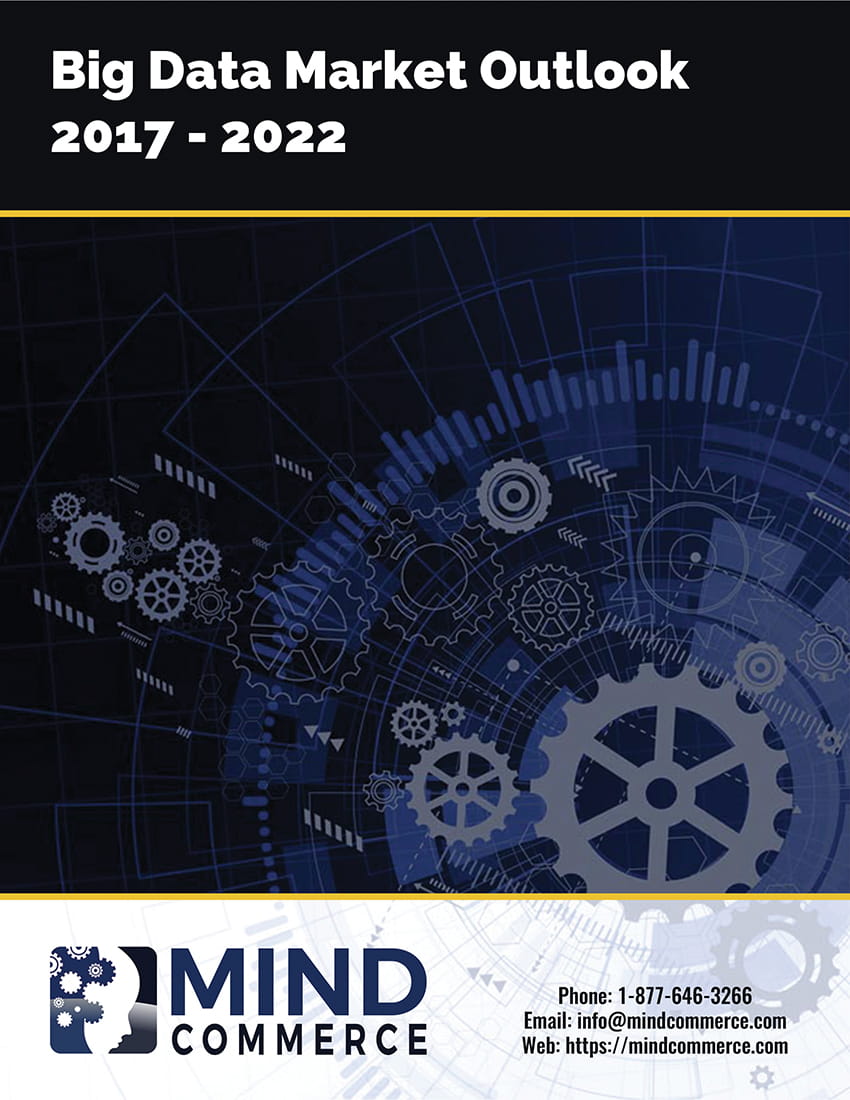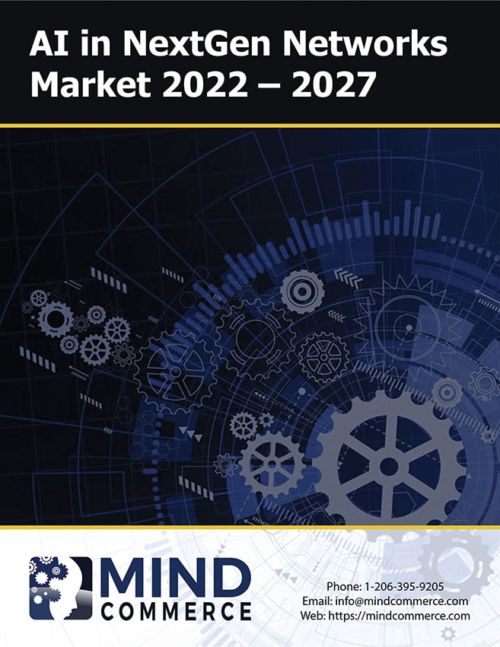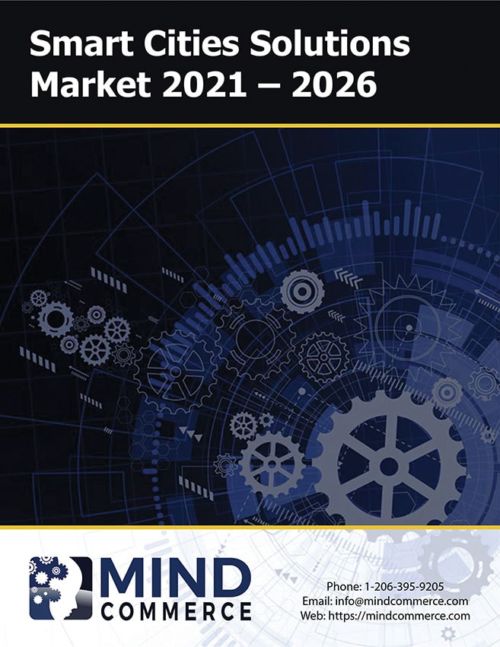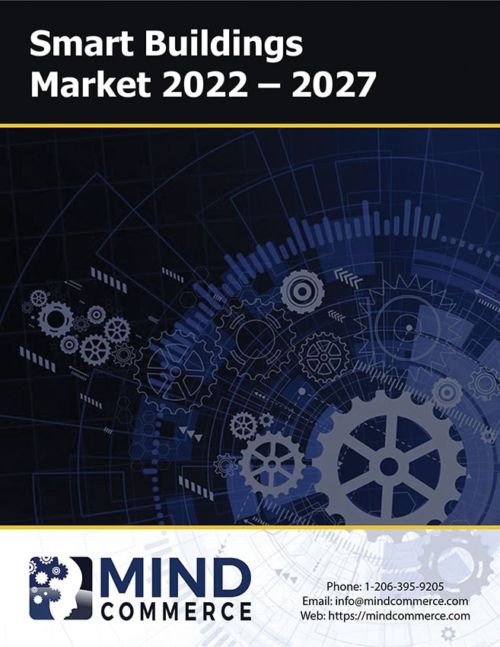Description
The management of unstructured data (e.g. Big Data), the leveraging of analytics tools to derive value, and the integration between Cloud, Internet of Things (IoT), and enterprise operational technology are key focus areas for large companies across virtually every industry vertical. However, Big Data and Analytics tools are not limited to large companies as products and services are emerging that are democratizing data for smaller companies.
A new data economy is developing in which the data associated with corporate products and services becomes almost as value as the company offerings themselves. New models are emerging to reduce friction across the value chain including enhanced Big Data as a Service (BDaaS) offerings. BDaaS is anticipated to make cross-industry, cross-company, and even cross-competitor data exchange a reality that adds value across the ecosystem with minimized security and privacy concerns.
Topics covered in the report include:
- Big Data Technology: A review of the underlying technologies that resolve big data complexities
- Big Data Use Cases: A review of investments sectors and specific use cases for the Big Data market
- The Big Data Value Chain: An analysis of the value chain of Big Data and the major players involved within it
- The Business Case for Big Data: An assessment of the business case, growth drivers and barriers for Big Data
- Big Data Vendor Assessment: Assessment of the vendor landscape of leading players within the Big Data market
- Market Analysis and Forecasts: A global and regional assessment of the market size and forecasts for 2017 to 2022
- Market Analysis and Forecasts: Big Data technology market outlook and forecasts for support of streaming IoT Data
All purchases of Mind Commerce reports includes time with an expert analyst who will help you link key findings in the report to the business issues you’re addressing. This needs to be used within three months of purchasing the report.
Table of Contents
1 Background
1.1 Introduction
1.2 Scope of the Report
1.3 Target Audience
1.4 Companies in Report
2 Executive Summary
3 Big Data Technology and Business Case
3.1 Defining Big Data
3.2 Key Characteristics of Big Data
3.2.1 Volume
3.2.2 Variety
3.2.3 Velocity
3.2.4 Variability
3.2.5 Complexity
3.3 Big Data Technology
3.3.1 Hadoop
3.3.1.1 Other Apache Projects
3.3.2 NoSQL
3.3.2.1 Hbase
3.3.2.2 Cassandra
3.3.2.3 Mongo DB
3.3.2.4 Riak
3.3.2.5 CouchDB
3.3.3 MPP Databases
3.3.4 Others and Emerging Technologies
3.3.4.1 Storm
3.3.4.2 Drill
3.3.4.3 Dremel
3.3.4.4 SAP HANA
3.3.4.5 Gremlin & Giraph
3.4 New Paradigms and Techniques
3.4.1 Streaming Analytics
3.4.2 Cloud Technology
3.4.3 Google Search
3.4.4 Customize Analytical Tools
3.4.5 Internet Keywords
3.4.6 Gamification
3.5 Big Data Roadmap
3.6 Market Drivers
3.6.1 Data Volume & Variety
3.6.2 Increasing Adoption of Big Data by Enterprises and Telecom
3.6.3 Maturation of Big Data Software
3.6.4 Continued Investments in Big Data by Web Giants
3.6.5 Business Drivers
3.7 Market Barriers
3.7.1 Privacy and Security: The ‘Big’ Barrier
3.7.2 Workforce Re-skilling and Organizational Resistance
3.7.3 Lack of Clear Big Data Strategies
3.7.4 Technical Challenges: Scalability & Maintenance
3.7.5 Big Data Development Expertise
4 Key Sectors for Big Data
4.1 Industrial Internet and Machine-to-Machine
4.1.1 Big Data in M2M
4.1.2 Vertical Opportunities
4.2 Retail and Hospitality
4.2.1 Improving Accuracy of Forecasts & Stock Management
4.2.2 Determining Buying Patterns
4.2.3 Hospitality Use Cases
4.2.4 Personalized Marketing
4.3 Media
4.3.1 Social Media
4.3.2 Social Gaming Analytics
4.3.3 Usage of Social Media Analytics by Other Verticals
4.3.4 Internet Keyword Search
4.4 Utilities
4.4.1 Analysis of Operational Data
4.4.2 Application Areas for the Future
4.5 Financial Services
4.5.1 Fraud Analysis, Mitigation & Risk Profiling
4.5.2 Merchant-Funded Reward Programs
4.5.3 Customer Segmentation
4.5.4 Customer Retention & Personalized Product Offering
4.5.5 Insurance Companies
4.6 Healthcare and Pharmaceutical
4.6.1 Drug Development
4.6.2 Medical Data Analytics
4.6.3 Case Study: Identifying Heartbeat Patterns
4.7 Telecommunications
4.7.1 Telco Analytics: Customer/Usage Profiling and Service Optimization
4.7.2 Big Data Analytic Tools
4.7.3 Speech Analytics
4.7.4 New Products and Services
4.8 Government and Homeland Security
4.8.1 Big Data Research
4.8.2 Statistical Analysis
4.8.3 Language Translation
4.8.4 Developing New Applications for the Public
4.8.5 Tracking Crime
4.8.6 Intelligence Gathering
4.8.7 Fraud Detection & Revenue Generation
4.9 Other Sectors
4.9.1 Aviation
4.9.2 Transportation & Logistics: Optimizing Fleet Usage
4.9.3 Sports: Real-Time Processing of Statistics
4.9.4 Education
4.9.5 Manufacturing
5 The Big Data Value Chain
5.1 Fragmentation in the Big Data Value
5.2 Data Acquisitioning & Provisioning
5.3 Data Warehousing & Business Intelligence
5.4 Analytics & Visualization
5.5 Actioning and Business Process Management
5.6 Data Governance
6 Big Data Analytics
6.1 What is Big Data Analytics?
6.2 The Importance of Big Data Analytics
6.3 Reactive vs. Proactive Analytics
6.4 Technology and Implementation Approaches
6.4.1 Grid Computing
6.4.2 In-Database processing
6.4.3 In-Memory Analytics
6.4.4 Data Mining
6.4.5 Predictive Analytics
6.4.6 Natural Language Processing
6.4.7 Text Analytics
6.4.8 Visual Analytics
6.4.9 Association Rule Learning
6.4.10 Classification Tree Analysis
6.4.11 Machine Learning
6.4.12 Neural Networks
6.4.13 Multilayer Perceptron (MLP)
6.4.14 Radial Basis Functions
6.4.14.1 Support Vector Machines
6.4.14.2 Naïve Bayes
6.4.14.3 K-nearest Neighbors
6.4.15 Geospatial Predictive Modelling
6.4.16 Regression Analysis
6.4.17 Social Network Analysis
7 Standardization and Regulatory Initiatives
7.1 Cloud Standards Customer Council
7.2 National Institute of Standards and Technology
7.3 OASIS
7.4 Open Data Foundation
7.5 Open Data Center Alliance
7.6 Cloud Security Alliance
7.7 International Telecommunications Union
7.8 International Organization for Standardization
8 Global Markets and Forecasts for Big Data
8.1 Global Big Data Markets 2017 – 2022
8.2 Regional Markets for Big Data 2017 – 2022
8.3 Big Data Revenue by Product Segment 2017 – 2022
8.3.1 Database Management Systems
8.3.2 Big Data Integration Tools
8.3.3 Application Infrastructure and Middleware
8.3.4 Business Intelligence Tools and Analytics Platforms
8.3.5 Big Data in Professional Services
9 Key Players in the Big Data Market
9.1 Vendor Assessment Matrix
9.2 1010Data
9.3 Accenture
9.4 Actian Corporation
9.5 Amazon
9.6 Apache Software Foundation
9.7 APTEAN (Formerly CDC Software)
9.8 Booz Allen Hamilton
9.9 Bosch Software Innovations: Bosch IoT Suite
9.10 Capgemini
9.11 Cisco Systems
9.12 Cloudera
9.13 CRAY Inc.
9.14 Computer Science Corporation (CSC)
9.15 DataDirect Network
9.16 Dell
9.17 Deloitte
9.18 EMC
9.19 Facebook
9.20 Fujitsu
9.21 General Electric (GE)
9.22 GoodData Corporation
9.23 Google
9.24 Guavus
9.25 HP
9.26 Hitachi Data Systems
9.27 Hortonworks
9.28 IBM
9.29 Informatica
9.30 Intel
9.31 Jasper (Cisco Jasper)
9.32 Juniper Networks
9.33 Marklogic
9.34 Microsoft
9.35 MongoDB (Formerly 10Gen)
9.36 MU Sigma
9.37 Netapp
9.38 NTT Data
9.39 Open Text (Actuate Corporation)
9.40 Opera Solutions
9.41 Oracle
9.42 Pentaho
9.43 Qlik Tech
9.44 Quantum
9.45 Rackspace
9.46 Revolution Analytics
9.47 Salesforce
9.48 SAP
9.49 SAS Institute
9.50 Sisense
9.51 Software AG/Terracotta
9.52 Splunk
9.53 Sqrrl
9.54 Supermicro
9.55 Tableau Software
9.56 Tata Consultancy Services
9.57 Teradata
9.58 Think Big Analytics
9.59 TIBCO
9.60 Tidemark Systems
9.61 VMware (Part of EMC)
9.62 Wipro
9.63 Workday (Platfora)
9.64 Zettics
10 Appendix: Big Data Support of Streaming IoT Data
10.1 Big Data Technology Market Outlook for Streaming IoT Data
10.1.1 IoT Data Management is a Ubiquitous Opportunity across Enterprise
10.1.2 IoT Data becomes a Big Data Revenue Opportunity
10.1.3 Real-time Streaming IoT Data Analytics becoming a Substantial Business Opportunity
10.2 Global Streaming IoT Data Analytics Revenue
10.2.1 Overall Streaming Data Analytics Revenue for IoT
10.2.2 Global Streaming IoT Data Analytics Revenue by App, Software, and Services
10.2.3 Global Streaming IoT Data Analytics Revenue in Industry Verticals
10.2.3.1 Streaming IoT Data Analytics Revenue in Retail
10.2.3.1.1 Streaming IoT Data Analytics Revenue by Retail Segment
10.2.3.1.2 Streaming IoT Data Analytics Retail Revenue by App, Software, and Service
10.2.3.2 Streaming IoT Data Analytics Revenue in Telecom and IT
10.2.3.2.1 Streaming IoT Data Analytics Revenue by Telecom and IT Segment
10.2.3.2.2 Streaming IoT Data Analytics Revenue by Telecom & IT App, Software, and Service
10.2.3.3 Streaming IoT Data Analytics Revenue in Energy and Utility
10.2.3.3.1 Streaming IoT Data Analytics Revenue by Energy and Utility Segment
10.2.3.3.2 Streaming IoT Data Analytics Energy and Utilities Revenue by App, Software, and Service
10.2.3.4 Streaming IoT Data Analytics Revenue in Government
10.2.3.4.1 Streaming IoT Data Analytics Revenue by Government Segment
10.2.3.4.2 Streaming IoT Data Analytics Government Revenue by App, Software, and Service
10.2.3.5 Streaming IoT Data Analytics Revenue in Healthcare and Life Science
10.2.3.5.1 Streaming IoT Data Analytics Revenue by Healthcare Segment
10.2.3.6 Streaming IoT Data Analytics Revenue in Manufacturing
10.2.3.6.1 Streaming IoT Data Analytics Revenue by Manufacturing Segment
10.2.3.6.2 Streaming IoT Data Analytics Manufacturing Revenue by App, Software, and Service
10.2.3.7 Streaming IoT Data Analytics Revenue in Transportation & Logistics
10.2.3.7.1 Streaming IoT Data Analytics Revenue by Transportation & Logistics Segment
10.2.3.7.2 Streaming IoT Data Analytics Transportation & Logistics Revenue by App, Software, and Service
10.2.3.8 Streaming IoT Data Analytics Revenue in Banking and Finance
10.2.3.8.1 Streaming IoT Data Analytics Revenue by Banking and Finance Segment
10.2.3.8.2 Streaming IoT Data Analytics Revenue by Banking & Finance App, Software, and Service
10.2.3.9 Streaming IoT Data Analytics Revenue in Smart Cities
10.2.3.9.1 Streaming IoT Data Analytics Revenue by Smart City Segment
10.2.3.10 Streaming IoT Data Analytics Revenue in Automotive
10.2.3.10.1 Streaming IoT Data Analytics Revenue by Automobile Industry Segment
10.2.3.10.2 Streaming IoT Data Analytics Revenue by Automotive Industry App, Software, and Service
10.2.3.11 Streaming IoT Data Analytics Revenue in Education
10.2.3.11.1 Streaming IoT Data Analytics Revenue by Education Industry Segment
10.2.3.11.2 Streaming IoT Data Analytics Revenue by Education Industry App, Software, and Service
10.2.3.12 Streaming IoT Data Analytics Revenue in Outsourcing Services
10.2.3.12.1 Streaming IoT Data Analytics Revenue by Outsourcing Segment
10.2.3.12.2 Streaming IoT Data Analytics Revenue by Outsourcing Industry App, Software, and Service
10.2.3.13 Streaming IoT Data Analytics Revenue by Leading Vendor Platform
10.3 Regional Streaming IoT Data Analytics Revenue
10.3.1 Revenue in Region
10.3.2 APAC Market Revenue
10.3.3 Europe Market Revenue
10.3.4 North America Market Revenue
10.3.5 Latin America Market Revenue
10.3.6 ME&A Market Revenue
10.4 Streaming IoT Data Analytics Revenue by Country 2016 – 2021
10.4.1 Revenue by APAC Countries
10.4.1.1 Leading Countries
10.4.1.2 Japan Market Revenue
10.4.1.3 China Market Revenue
10.4.1.4 India Market Revenue
10.4.1.5 Australia Market Revenue
10.4.2 Revenue by Europe Countries
10.4.2.1 Leading Countries
10.4.2.2 Germany Market Revenue
10.4.2.3 UK Market Revenue
10.4.2.4 France Market Revenue
10.4.3 Revenue by North America Countries
10.4.3.1 Leading Countries
10.4.3.2 US Market Revenue
10.4.3.3 Canada Market Revenue
10.4.4 Revenue by Latin America Countries
10.4.4.1 Leading Countries
10.4.4.2 Brazil Market Revenue
10.4.4.3 Mexico Market Revenue
10.4.5 Revenue by ME&A Countries
10.4.5.1 Leading Countries
10.4.5.2 South Africa Market Revenue
10.4.5.3 UAE Market Revenue
2.1 Understanding Multi-access Edge Computing
2.1.1 Edge Computing
2.1.2 Edge Computing vs. Cluster Computing
2.1.3 Multi-access Edge Computing
2.2 Important Characteristics of MEC
2.2.1 Processing at the Edge
2.2.2 Low Latency
2.2.3 Context Based
2.2.4 Location and Analytics
2.3 MEC Benefits
2.3.1 Business Benefits
2.3.2 Technical Benefits
2.3.3 Mobile Network Operator Benefits
3 MEC Technology, Platforms, and Architecture
3.1 MEC Platform Architecture Building Blocks
3.1.1 MEC Infrastructure
3.1.2 MEC Application Platforms
3.1.3 MEC Management Framework
3.2 MEC Value Chain for Edge Cloud Computing
3.3 MEC Technology Building Blocks
3.3.1 Radio Network Information Service
3.3.2 Traffic Offload Function
3.3.3 MEC Interfaces
3.3.4 Configuration Management
3.3.5 Application Lifecycle Management
3.3.6 VM Operations and Management
3.3.7 Hardware Virtualization and Infrastructure Management
3.3.8 Core Network Elements
3.3.9 Open Standards
3.4 MEC Technology Enablers
3.4.1 Mobile Computing to Mobile Cloud Computing
3.4.2 Cloudlet based Mobile Cloud Computing
3.4.3 Cloudlet to Cloud
3.4.4 PacketCloud Open Platform for Cloudlets
3.4.5 Enterprise Cloud Architecture
3.4.6 Akamai Cloudlet Solution
3.4.7 OPENi Cloudlet Storage Framework
3.5 MEC Deployment
4 MEC Market Drivers and Opportunities
4.1 Limitations of Cloud Convergence
4.2 IT and Telecom Network Convergence
4.3 Base Station Evolution
4.4 Cell Aggregation
4.5 Virtualization in the Cloud
4.6 Continually Improving Server Capacity
4.7 Data Center to Network Interactions
4.8 Open and Flexible App and Service Ecosystem
4.9 Fifth Generation (5G) Wireless
4.10 Edge Cloud and Data Transferability
4.11 Proximate Cloud Computing
4.12 Increasingly Faster Content Delivery
4.13 Advantages of MEC Small Cell Deployment
4.14 Overall Mobile Data Demand
4.15 Low Latency Applications
4.16 Integration of MEC with Cloud RAN
4.17 MEC Enhances Real-time Data and Analytics
4.17.1 Why Data at the Edge?
4.17.2 Convergence of Distributed Cloud and Big Data 5
5 MEC Ecosystem
5.1 Network Ecosystem
5.2 MEC Ecosystem Players
5.2.1 Software and ASPs
5.2.2 OTT Service and Content Providers
5.2.3 Network Infrastructure and Equipment Providers
5.2.4 Mobile Network Operators
6 MEC Application and Service Strategies
6.1 Optimizing the Mobile Cloud
6.1.1 Mobile Network Operator Strategies
6.1.2 Service Strategies and End-user Demand
6.2 Context Aware Services
6.2.1 Commerce
6.2.2 Education
6.2.3 Gaming
6.2.4 Healthcare
6.2.5 Location-based Services
6.2.6 Public Safety
6.2.7 Connected Vehicles
6.2.8 Wearables
7 MEC Market Forecasts 2017 – 2022
7.1 Global Market 2017 – 2022
7.1.1 Combined MEC Market
7.1.2 MEC Market by Segment
7.1.2.1 MEC Cloud Server Market
7.1.2.2 MEC Equipment Market
7.1.2.3 MEC Platform Market
7.1.2.4 MEC Software and API Market
7.1.2.5 MEC Service Market
7.1.3 MEC Enterprise CAPEX and OPEX Spend
7.1.4 MEC Network Migration
7.1.5 MEC Enterprise Adoption
7.2 MEC Regional Market 2017 – 2022
7.2.1 North America Market Forecast
7.2.2 APAC Market Forecasts
7.2.3 Europe Market Forecast
7.3 MEC Network Users/Devices 2017 – 2022
7.3.1 Global MEC Network Users/Devices
7.3.2 MEC Network User by Supporting Network
7.3.3 Regional MEC Network User
7.3.3.1 North America User
7.3.3.2 APAC User
7.3.3.3 Europe User
8 Conclusions and Recommendations
Tables
TABLE 1: Global Big Data Markets 2017 – 2022
TABLE 2: Regional Big Data Markets 2017 – 2022
TABLE 3: Big Data Markets by Product Segments 2017 – 2022
TABLE 4: Database Management Systems 2017 – 2022
TABLE 5: Data Integration Tools 2017 – 2022
TABLE 6: Application Infrastructure and Middleware 2017 – 2022
TABLE 7: Business Intelligence Tools and Analytics Platforms 2017 – 2022
TABLE 8: Big Data in Professional Services 2017 – 2022
TABLE 9: Big Data Analytics Platforms by Company
Table 10: Global Streaming IoT Data Analytics Revenue by App, Software, and Service 2016 – 2021
Table 11: Global Streaming IoT Data Analytics Revenue in Industry Vertical 2016 – 2021
Table 12: Retail Streaming IoT Data Analytics Revenue by Retail Segment 2016 – 2021
Table 13: Retail Streaming IoT Data Analytics Revenue by App, Software, and Services 2016 – 2021
Table 14: Telecom & IT Streaming IoT Data Analytics Rev by Segment 2016 – 2021
Table 15: Telecom & IT Streaming IoT Data Analytics Rev by App, Software, and Services 2016 – 2021
Table 16: Energy & Utilities Streaming IoT Data Analytics Rev by Segment 2016 – 2021
Table 17: Energy & Utilities Streaming IoT Data Analytics Rev by App, Software, and Services 2016 – 2021
Table 18: Government Streaming IoT Data Analytics Revenue by Segment 2016 – 2021
Table 19: Government Streaming IoT Data Analytics Revenue by App, Software, and Services 2016 – 2021
Table 20: Healthcare & Life Science Streaming IoT Data Analytics Revenue by Segment 2016 – 2021
Table 21: Healthcare & Life Science Streaming IoT Data Analytics Revenue by App, Software, and Services 2016 – 2021
Table 22: Manufacturing Streaming IoT Data Analytics Revenue by Segment 2016 – 2021
Table 23: Manufacturing Streaming IoT Data Analytics Revenue by App, Software, and Services 2016 – 2021
Table 24: Transportation & Logistics Streaming IoT Data Analytics Revenue by Segment 2016 – 2021
Table 25: Transportation & Logistics Streaming IoT Data Analytics Revenue by App, Software, and Services 2016 – 2021
Table 26: Banking and Finance Streaming IoT Data Analytics Revenue by Segment 2016 – 2021
Table 27: Banking & Finance Streaming IoT Data Analytics Revenue by App, Software, and Services 2016 – 2021
Table 28: Smart Cities Streaming IoT Data Analytics Revenue by Segment 2016 – 2021
Table 29: Smart Cities Streaming IoT Data Analytics Revenue by App, Software, and Services 2016 – 2021
Table 30: Automotive Streaming IoT Data Analytics Revenue by Segment 2016 – 2021
Table 31: Automotive Streaming IoT Data Analytics Revenue by Apps, Software, and Services 2016 – 2021
Table 32: Education Streaming IoT Data Analytics Revenue by Segment 2016 – 2021
Table 33: Education Streaming IoT Data Analytics Revenue by App, Software, and Services 2016 – 2021
Table 34: Outsourcing Service Streaming IoT Data Analytics Revenue by Segment 2016 – 2021
Table 35: Outsourcing Service Streaming IoT Data Analytics Revenue by App, Software, and Services 2016 – 2021
Table 36: Streaming IoT Data Analytics Revenue by Leading Vendor Platforms 2016 – 2021
Table 37: Streaming IoT Data Analytics Revenue in Region 2016 – 2021
Table 38: APAC Streaming IoT Data Analytics Revenue by Solution and Services 2016 – 2021
Table 39: APAC Streaming IoT Data Analytics Revenue in Industry Vertical 2016 – 2021
Table 40: APAC Streaming IoT Data Analytics Revenue by Leading Vendor Platforms 2016 – 2021
Table 41: Europe Streaming IoT Data Analytics Revenue by Solution and Services 2016 – 2021
Table 42: Europe Streaming IoT Data Analytics Revenue in Industry Vertical 2016 – 2021
Table 43: Europe Streaming IoT Data Analytics Revenue by Leading Vendor Platforms 2016 – 2021
Table 44: North America Streaming IoT Data Analytics Revenue by Solution and Services 2016 – 2021
Table 45: North America Streaming IoT Data Analytics Revenue in Industry Vertical 2016 – 2021
Table 46: North America Streaming IoT Data Analytics Revenue by Leading Vendor Platforms 2016 – 2021
Table 47: Latin America Streaming IoT Data Analytics Revenue by Solution and Services 2016 – 2021
Table 48: Latin America Streaming IoT Data Analytics Revenue in Industry Vertical 2016 – 2021
Table 49: Latin America Streaming IoT Data Analytics Revenue by Leading Vendor Platforms 2016 – 2021
Table 50: ME&A Streaming IoT Data Analytics Revenue by Solution and Services 2016 – 2021
Table 51: ME&A Streaming IoT Data Analytics Revenue in Industry Vertical 2016 – 2021
Table 52: ME&A Streaming IoT Data Analytics Revenue by Leading Vendor Platforms 2016 – 2021
Table 53: Streaming IoT Data Analytics Revenue by APAC Countries 2016 – 2021
Table 54: Japan Streaming IoT Data Analytics Revenue by Solution and Services 2016 – 2021
Table 55: Japan Streaming IoT Data Analytics Revenue in Industry Vertical 2016 – 2021
Table 56: China Streaming IoT Data Analytics Revenue by Solution and Services 2016 – 2021
Table 57: China Streaming IoT Data Analytics Revenue in Industry Vertical 2016 – 2021
Table 58: India Streaming IoT Data Analytics Revenue by Solution and Services 2016 – 2021
Table 59: India Streaming IoT Data Analytics Revenue in Industry Vertical 2016 – 2021
Table 60: Australia Streaming IoT Data Analytics Revenue by Solution and Services 2016 – 2021
Table 61: Australia Streaming IoT Data Analytics Revenue in Industry Vertical 2016 – 2021
Table 62: Streaming IoT Data Analytics Revenue by Europe Countries 2016 – 2021
Table 63: Germany Streaming IoT Data Analytics Revenue by Solution and Services 2016 – 2021
Table 64: Germany Streaming IoT Data Analytics Revenue in Industry Vertical 2016 – 2021
Table 65: UK Streaming IoT Data Analytics Revenue by Solution and Services 2016 – 2021
Table 66: UK Streaming IoT Data Analytics Revenue in Industry Vertical 2016 – 2021
Table 67: France Streaming IoT Data Analytics Revenue by Solution and Services 2016 – 2021
Table 68: France Streaming IoT Data Analytics Revenue in Industry Vertical 2016 – 2021
Table 69: Streaming IoT Data Analytics Revenue by North America Countries 2016 – 2021
Table 70: US Streaming IoT Data Analytics Revenue by Solution and Services 2016 – 2021
Table 71: US Streaming IoT Data Analytics Revenue in Industry Vertical 2016 – 2021
Table 72: Canada Streaming IoT Data Analytics Revenue by Solution and Services 2016 – 2021
Table 73: Canada Streaming IoT Data Analytics Revenue in Industry Vertical 2016 – 2021
Table 74: Streaming IoT Data Analytics Revenue by Latin America Countries 2016 – 2021
Table 75: Brazil Streaming IoT Data Analytics Revenue by Solution and Services 2016 – 2021
Table 76: Brazil Streaming IoT Data Analytics Revenue in Industry Vertical 2016 – 2021
Table 77: Mexico Streaming IoT Data Analytics Revenue by Solution and Services 2016 – 2021
Table 78: Mexico Streaming IoT Data Analytics Revenue in Industry Vertical 2016 – 2021
Table 79: Streaming IoT Data Analytics Revenue by ME&A Countries 2016 – 2021
Table 80: South Africa Streaming IoT Data Analytics Revenue by Solution and Services 2016 – 2021
Table 81: South Africa Streaming IoT Data Analytics Revenue in Industry Vertical 2016 – 2021
Table 82: UAE Streaming IoT Data Analytics Revenue by Solution and Services 2016 – 2021
Table 83: UAE Streaming IoT Data Analytics Revenue in Industry Vertical 2016 – 2021
License Types
Licensing Rights and Privileges
Our publications represent client privileged information. No material in them may be stored, reproduced, distributed, in whole or in part, without prior written permission from Mind Commerce.
License Types
Single-User: Provides the right to the purchaser or their designee to utilize a publication including reading, printing, and storing on one machine such as a laptop or desktop computer. This license is appropriate for an individual or single-person usage within a company.
Multi-User: Provides the right for a group of up to five people within an organization to utilize a publication including reading, printing, and storing on one machine for each respective user. (Note: Let us know if you need a special license for more than five people but less than an entire corporate site).
Enterprise Site: Provides the right for a Single Site of an Organization to store, read, and distribute a publication within its own organization. This licensing option is often chosen by businesses or NGO’s that have a single site/location.
Global Enterprise: Provides the right for an Entire Global Organization to store, read, and distribute a publication within its own organization (including placement on corporate intranet), but not distribute outside the enterprise to any third party. This licensing option is often chosen by large businesses, governments, or NGO’s to Benefit all Employees and also to Maintain Organizational Intellectual Property Compliance.
Payment Options
Mind Commerce offers flexible and convenient methods for ordering research and paying for purchases:
- Credit Card: Major credit cards via secure online, fax, or over the phone – Read More
- Purchase Order: We accept corporate PO to initiate a research order – Read More
- Prepayment: Purchase prepaid credit for future research requests – Read More
- Payment via Check, ACH, or Wire: Electronica of physical check – Read More
- Alternative Payments: Payment via a client’s PayPal account – Read More





